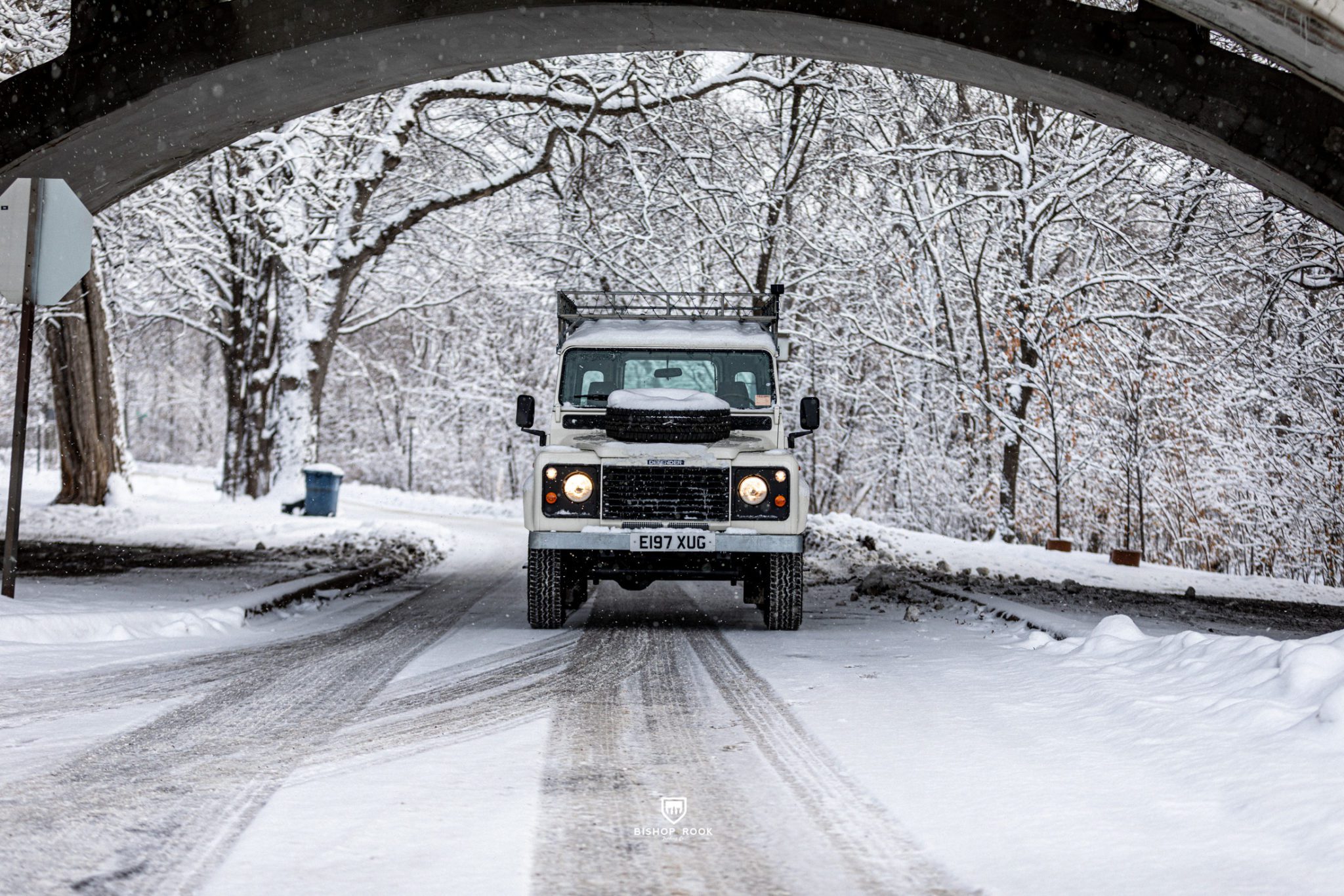Driving in the winter can be a challenge. Whether you’re in the city or out in the country, snow, ice, and slippery roads can make driving a tedious and sometimes dangerous experience. But if you’re lucky enough to be behind the wheel of a classic Land Rover Defender, you can be confident that you’ll be able to tackle any winter driving conditions with ease.
The Land Rover Defender is renowned for its rugged design and exceptional off-road capability. With its legendary 4-wheel-drive system, the Defender can climb hills and traverse rocky trails with relative ease. And when it comes to tackling winter roads, the Defender is more than equipped to handle the challenge.
Those screaming with rage right now … calm down. Hear us out.
The Land Rover Defender as a Capable Winter Vehicle
It’s no wonder the Defender has been used worldwide as a winter vehicle. Its 4-wheel-drive system has helped it traverse glaciers in Antarctica, cruise across frozen tundras in Russia, and maneuver through snow-capped mountains in Canada. Whether you’re stuck in a snow drift or trying to climb a steep hill, the Defender can provide you with the necessary power and traction to get the job done.
 But the Defender is more than just a winter warrior. It has a unique style and charm, making it a head-turner no matter where you go. Its iconic boxy design and rugged good looks make it a desirable vehicle, especially in a classic Land Rover Defender.
But the Defender is more than just a winter warrior. It has a unique style and charm, making it a head-turner no matter where you go. Its iconic boxy design and rugged good looks make it a desirable vehicle, especially in a classic Land Rover Defender.
Building + Maintaining Your Defender For Year-Round Driving
But as with all classic cars, the Defender is not without its drawbacks. Its design and construction makes it prone to rust. Fortunately, there are easy solutions to this problem. Regular maintenance and treatments, such as chassis treatments and regular washing, can help keep rust at bay. While the Defender might get a bad reputation for rust, it’s not because it’s a unique problem to this vehicle. Any classic car, or modern car for that matter, will be susceptible to rust and corrosion if owners don’t properly care for them. A weekly car wash in areas that salt and ice roads can ensure the Defender will remain rust-free for years to come.

For those considering a custom-built Land Rover Defender for use in cold and wet climates, we offer the option of changing out the factory steel chassis with a hot-dipped galvanized chassis that will ensure rust is kept at bay for decades into the future. If you currently own a Defender with major signs of rust, this can be a great way to extend your vehicle’s life, as well.
Caring For Your Winter-Driving Land Rover Defender
Overall, the classic Land Rover Defender is a great winter vehicle. Its 4-wheel-drive system provides plenty of power and traction for slippery roads, and its classic design makes it a head-turner wherever you go. With regular maintenance and treatments, you can be sure that your classic Land Rover Defender will be with you for many winters to come. Here are some very simple tips:
- Wash regularly – Regular cleaning off any road salts, dirt, and grime that could cause damage to your car’s chassis is important.
- Apply a protective coating – After thoroughly washing and drying your vehicle, apply a protective coating such as a spray-on wax or rust-inhibiting paint. We recommend oil or lanolin-based protection in extremely cold climates, as they are less prone to cracking after freezing.
- Check routinely – Check your car’s chassis for any rust or corrosion regularly and repair any small areas before they become a bigger problem.
- Wax or polish – Wax or polish your vehicle to provide additional protection against the elements and to help prevent corrosion.
- Store your vehicle indoors – If possible, store your car in a dry, climate-controlled garage or shed in the winter. Keep humidity levels down in heated storage areas, which can be just as bad as leaving a vehicle unprotected.
- Add rust inhibitors to the fuel tank – Consider adding rust inhibitors to the fuel tank to help reduce the effect of salt and chemicals on the entire car.
Here is a short video showing how important it is to keep an eye on the condition of your chassis and ways to properly pressure wash it to make sure there are no hidden spots of dirt or chemicals that can cause the Defender chassis to rust.
Overall, the classic Land Rover Defender is a great winter vehicle. Its 4-wheel-drive system provides plenty of power and traction for slippery roads, and its classic design makes it a head-turner wherever you go. With regular maintenance and treatments, you can be sure that your classic Land Rover Defender will be with you for many winters to come.













You must be logged in to post a comment.